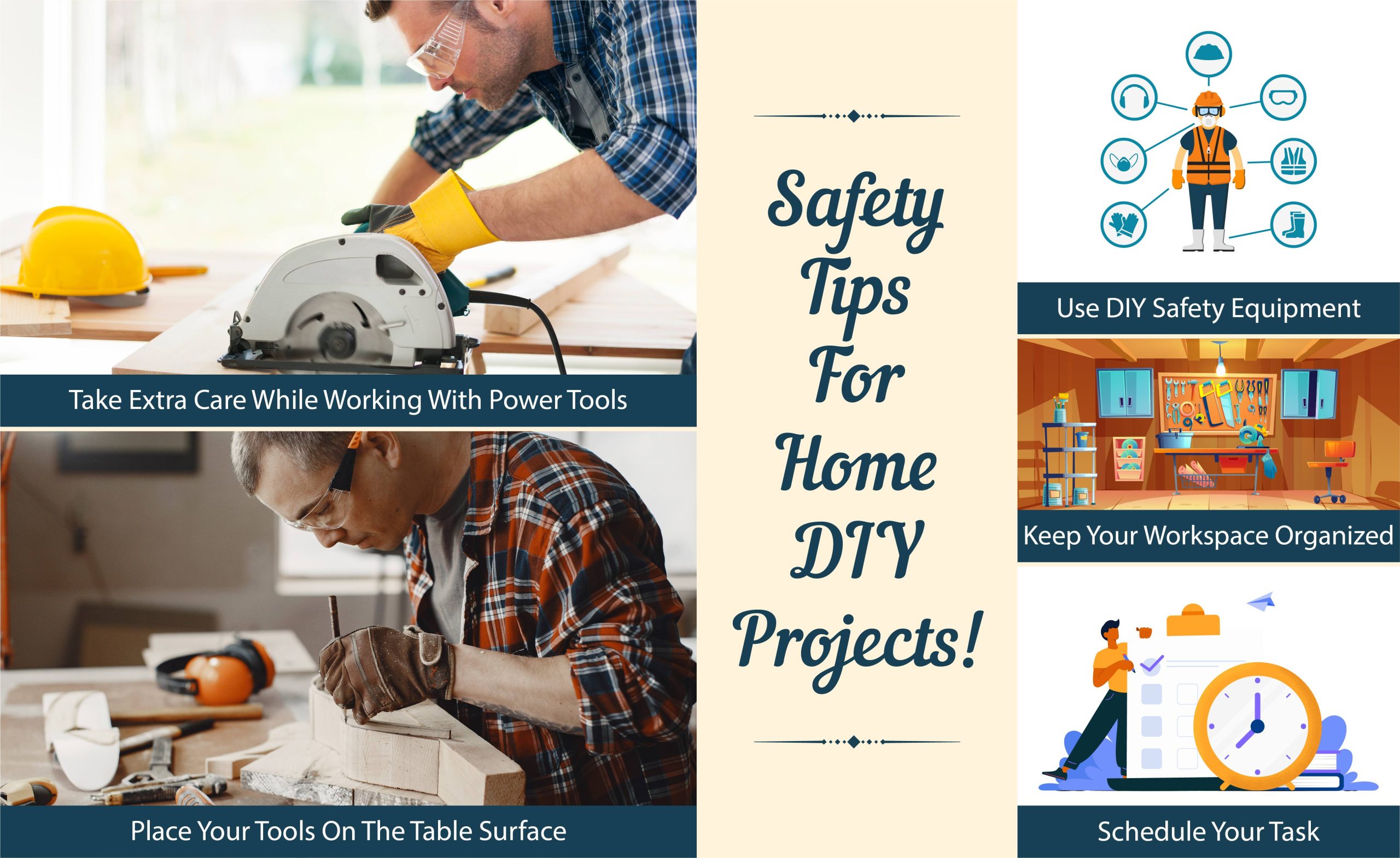As someone who loves taking on Do-It-Yourself (DIY) projects around the house, I have learned a lot about the importance of safety measures. From renovating a bathroom to building a new bookshelf, each project brings its own set of challenges and potential hazards. However, with the right precautions, you can ensure that your DIY adventures are both successful and safe.
First and foremost, before you dive into any project, it is crucial to have a well-equipped toolbox. Start by investing in high-quality safety gear such as goggles, gloves, and a hard hat. These items might seem excessive, but they provide essential protection when working with power tools or handling sharp objects. Trust me; a small investment in safety gear can save you from serious injuries.
Next, always make it a priority to educate yourself about the project you are about to undertake. Whether it’s watching tutorial videos, reading step-by-step guides, or consulting with professionals, having a good understanding of the task at hand will not only make it easier but also reduce the risk of accidents. Knowledge is power, especially when it comes to avoiding common mistakes that could jeopardize your safety.
Another crucial aspect of DIY safety is ensuring that your workspace is clean and organized. A cluttered area can increase the chances of tripping or falling, so it’s important to keep everything tidy. Clear away any unnecessary tools or materials and store them properly to avoid accidents. Additionally, double-check that there is enough lighting in the area, as poor visibility can lead to mistakes or injuries.
When it comes to working with power tools, extra caution is necessary. Always read the instruction manual before using any power tool and make sure you understand the safety guidelines. It is also wise to wear hearing protection when working with loud tools such as drills or saws to avoid long-term hearing damage. Remember, rushing through a project or neglecting safety measures can lead to severe consequences, so take your time and follow proper procedures.
Furthermore, be vigilant about electrical safety. It is critical to turn off the power supply to the area you will be working on to prevent electrocution. If you are unsure about which circuit breaker controls that specific area, it’s always better to turn off the main power supply to the entire house. Additionally, avoid using extension cords as a permanent solution and instead opt for proper electrical installations. Faulty wiring can result in fires or electrical shocks, so it’s best to play it safe.
If you are planning to work on a project that involves climbing or working at heights, it is essential to take precautions to prevent falls. Use sturdy ladders or scaffolding that are in good condition. Always position the ladder on a level surface and ensure it is fully stable before climbing up. Also, remember to avoid reaching too far or overstretching, as it can lead to loss of balance and potentially dangerous situations.
While it’s tempting to tackle larger projects alone, having a partner can greatly enhance safety. Having someone to assist you can help prevent accidents or provide immediate help in case of an emergency. They can spot potential hazards that you may overlook and lend a hand when it comes to heavy lifting or maneuvering cumbersome materials. Working with a partner not only minimizes risks but also makes the experience more enjoyable.
Accidents can happen even if you take all necessary precautions, so it is crucial to have a well-stocked first aid kit on hand. Make sure it includes essentials such as bandages, antiseptic solution, pain relievers, and any specific items you may need for your projects. In case of an accident, having immediate access to medical supplies can make a significant difference in the outcome.
Lastly, never hesitate to seek professional help if you are unsure about a task. There is no shame in admitting when a job is beyond your abilities or expertise. It’s better to be safe than sorry, so reach out to professionals who can ensure that the job is done correctly and safely.
In conclusion, tackling home DIY projects can be both rewarding and enjoyable, but it is essential to prioritize safety throughout the process. Invest in proper safety equipment, educate yourself about the task at hand, maintain a clean workspace, and take extra precautions when working with power tools or at heights. Always be aware of electrical hazards and consider working with a partner. Keep a well-stocked first aid kit nearby and don’t hesitate to seek professional help when needed. DIY projects can transform your home, but ensuring your safety should always be the first step towards achieving success.
